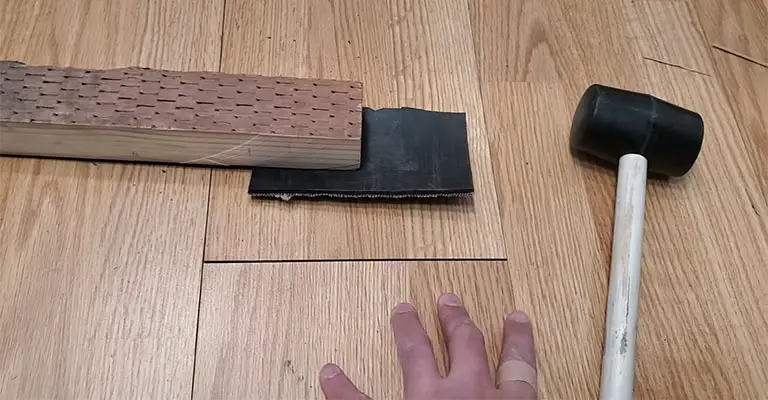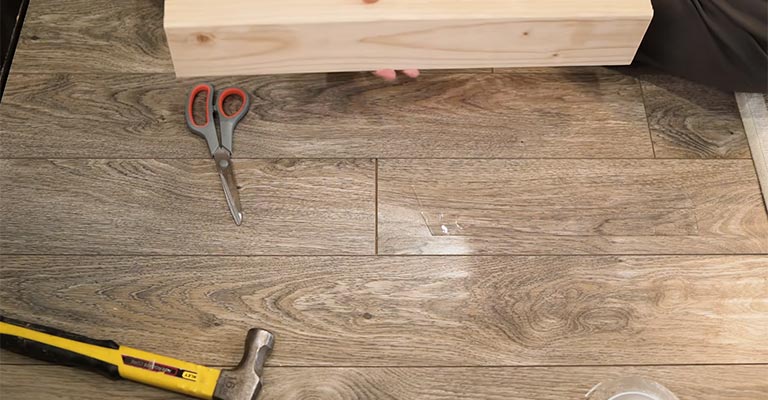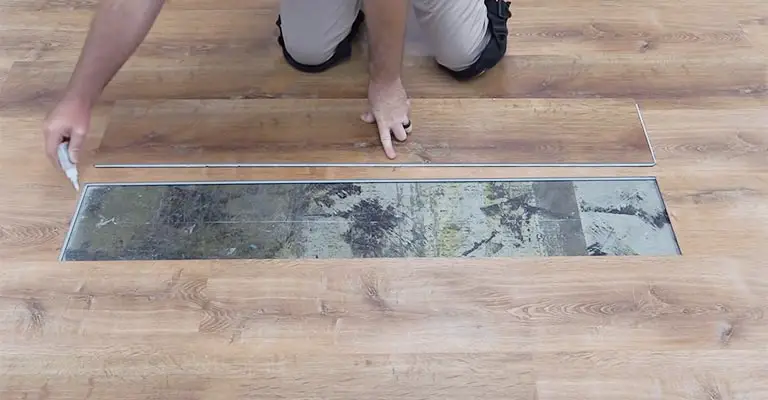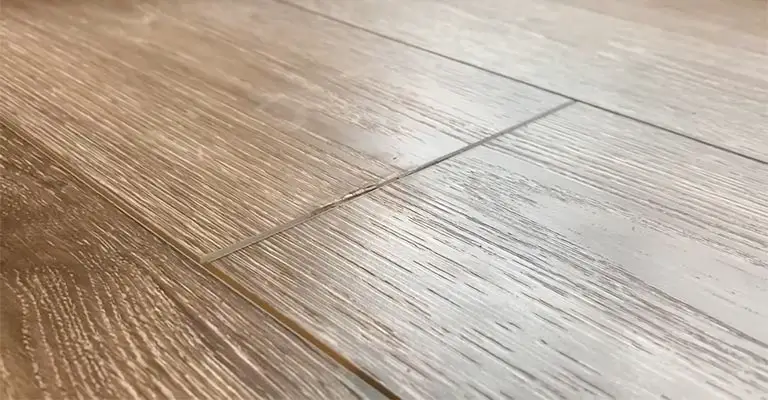Vinyl plank flooring has become famous for homeowners due to its durability, versatility, and ease of installation.
However, over time, even the most well-installed vinyl plank flooring may encounter issues, and one common problem is when the planks start to lift.
A lifting vinyl plank can be an eyesore and a tripping hazard, whether it’s caused by moisture, improper installation, or other factors.
Fortunately, fixing this issue doesn’t always require professional help, and in this article, we will explore the steps and techniques to effectively repair and secure your vinyl plank flooring, ensuring it remains safe and aesthetically pleasing.
What To Do If Your Luxury Vinyl Plank Floor Is Lifting?
LVP flooring, or luxury vinyl plank flooring, is an excellent choice for modern floors. It’s durable construction and beautiful colors and patterns make it a great choice.
Moreover, LVP typically only requires minimal maintenance. In spite of that, it doesn’t avoid all problems.
The floor may need to be repaired after a dropped object dents it or it’s lifted by improper maintenance. These simple steps will help you repair luxury vinyl plank flooring.
Pro Tip: Never forget to order extra
Although it’s probably too late now, ordering a little extra when installing LVP floors may be a great idea in the future.
If anything goes wrong with your floor in the future, you can have an exact match to your current planks.
Glue Down Flooring Repair
In the case that your LVP was installed with glue, repairs should not be too complicated.
- Remove the affected plank by scraping it up with a scraper or other thin-edged tool. Be careful not to damage the corners or surface since if it lifts, you can simply glue it back down.
- You can clean up your subfloor with a floor scraper or painter’s tool. You should remove all old glue residue and ensure a smooth surface.
- Remove all debris, even the smallest particles, using a vacuum cleaner.
- Paintbrushes or small rollers are suitable for applying new adhesive. In addition, you can use a trowel. Getting a solid layer that holds your LVP without being too thin or thick is essential.
- Ensure that your instructions state whether you need to dry the adhesive before laying down the flooring. To set some, allow a few minutes.
- Once your adhesive is ready, you can lay down your plank. You should begin in the middle and press down and out while smoothing out the plank.
- Make sure you roll over the board as firmly as you can with a clean, dry roller. Be sure to pay attention to edges and corners as well!
- If there has been any seepage, wipe it up with a damp, clean rag. You must wipe away any adhesive that has squished under the plank before it dries.
- Be sure to let it dry completely. The process usually takes eight hours or longer. Mineral spirits may be required if you do not entirely remove excess adhesive before it dries.
Click And Lock Vinyl Flooring
When it comes to click-and-lock flooring, replacing a damaged plank isn’t easily possible. Remove the LVP planks starting from the wall or edge close to your damaged plank.
Most of the time, you can gently separate one section from another by getting under an edge. Be careful not to damage any of the good planks you have.
Continue lifting and disconnecting the pieces until you reach the problematic part’s edge.
If the affected plank needs replacing, you can return it. When this happens, it is beneficial to have purchased extra LVP during the installation process.
You’ll then need to reinstall your floor, working outwards from the replacement plank to the wall. As a result, there is no need to wait for the adhesive to dry. Everything is as good as new on your floor!
How to Stop Your Vinyl Plank Flooring from Buckling?

You can prevent buckling of this flooring in the first place by following a few simple preventative measures when installing it in your home or office.
Sunlight and Window Treatments
The most common reason vinyl planks buckle is extreme heat and sunlight. To prevent this, ensure nearby windows are protected from flooring.
Directly applying a UV film or glass tint to the windows can minimize heat and light transfer. Using blackout curtains or thermal curtains will also limit the amount of damage to floors caused by adjacent windows.
The wood-look vinyl is easy to install and can be applied to a flat, dry surface with just a peel-and-stick method.
Rolling the Floor
Use a 100-pound roller to roll your glue-down vinyl planks after you’ve laid them down. As a result, the subfloor will be secure, and the floor will have an adhesive seal on every floor area. Rolling vinyl plank flooring initially can prevent it from buckling down the road.
Using Proper Adhesive
Some vinyl flooring types require glue-down installation. For this process, make sure you are using a top-quality adhesive. It is more likely that inexpensive adhesives will become loose and buckle floors than premium adhesives.
The importance of using premium adhesive lies in using it correctly as well. There is a specific time within which an adhesive brand forms a secure bond.
There is a chance that the adhesive will not adhere properly if spread after the working time has passed. When using vinyl floor adhesive, be sure to carefully follow all manufacturer instructions.
What Causes Buckling?

If you install click-together flooring, loose-lay flooring, or glue-down flooring, you may experience buckling. Several factors can contribute to this problem. If we understand the reasons for buckling, we can use preventative measures to eliminate the problem.
Not Allowing for a Perimeter
Heating and cooling naturally expand and contract vinyl flooring. This natural expansion must be allowed by stopping the floor between a quarter inch and a half inch shy of the wall.
With a flush-mounted floor, moisture cannot be trapped between the slab and the wall, which is why loose-lay floors can easily buckle during the hot months.
Dragging Heavy Objects Over Loose Lay Flooring
In most cases, vinyl plank flooring does not require glue-down installation. Considering vinyl flooring’s durability and ease of installation, loose-lay vinyl flooring is trendy.
Nevertheless, it tends to buckle when heavy furniture is dragged across it. If you plan to move a large item, you should lift the piece or hire furniture movers to help limit floor damage.
Protecting furniture from daily scratches can also be accomplished with felt pads.
Moisture
A wet concrete subfloor can weaken the adhesive, resulting in buckling under the flooring. The vinyl plank flooring can be effectively protected against buckling by installing a vapor barrier under it during installation.
Generally speaking, better-quality materials are less likely to buckle when moist. If you install vinyl plank flooring in a bathroom or kitchen, ensure it is waterproof.
Sunlight & Heat
The expansion and contraction of the vinyl leads to vinyl plank flooring buckling. A buckling floor may result from the material expanding when it warms up.
The opposite occurs in colder temperatures, with the floor contracting, resulting in gaps between tiles. Typically, buckles are found along sliding glass doors, large windows in the home, and areas that get more direct sunlight.
It is also possible for tiles to shift if they are self-stick or glue-down, as heat from the sun can release the glue’s bond.
This type of damage is expected, especially with vinyl flooring with a fiberglass inner layer. As a result of their thicker and more durable construction, the luxury vinyl floors are less likely to buckle than the less expensive economy tile floors.
Vinyl Plank Flooring Repairs

Some repair methods can be used if buckling has already taken place. Sometimes, a simple repair of the affected area is all that is needed. If the problem is severe, a whole flooring section must be replaced.
Making Repairs
The buckling in glue-down floors can be gently peeled back. Remove any failing adhesive using a scraper, softening it if necessary with a hairdryer. Place the vinyl tile back in place using the new adhesive.
Once the buckled area has been smoothed out, the adhesive can be rolled over to ensure that it adheres properly. When the adhesive is drying, place a few weights on the floor to help speed up the process.
Replacing a Section
The design of click-together flooring or loose-lay flooring allows for easy replacement of a section.
Make sure the buckled tiles are gently removed so that new pieces can easily be cut to size. Working the new parts into place with a rubber mallet is easiest.
Always keep an extra box of materials on hand when installing floors for the first time. Doing so will ensure that enough product remains on hand for future patches and repairs.
Final Words
Plank flooring made of vinyl is a long-lasting and durable option for homes and offices. Because the product is resilient, it will likely last for a long time. A slight buckling may occur near wet areas and near windows on occasion.
You can prevent buckling by ensuring proper installation and taking preventative measures. Luckily, small repairs and patches can help restore the splendor of the flooring if it happens.







